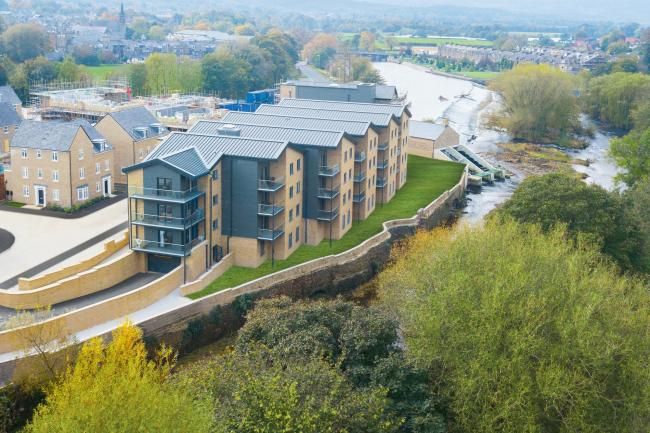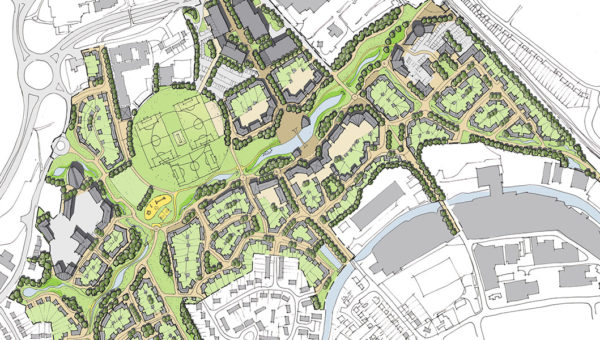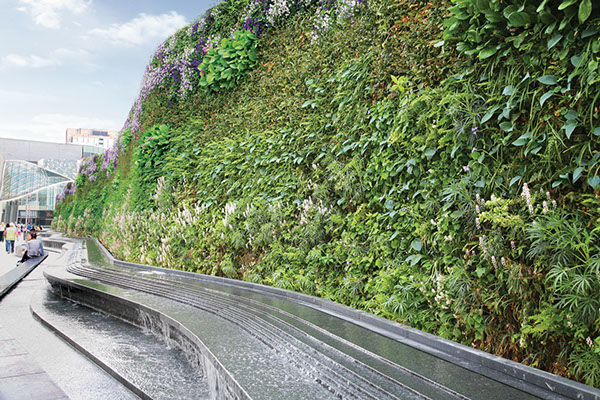Planning, developments and enhancing biodiversity
Most developers, councils and people do not want to harm biodiversity; however, it remains threatened in the UK.
National drives for new developments and affordable housing have been a major contributor for habitat and biodiversity loss within the UK.
Biodiversity is the variety of life on earth in all its forms and all its interactions, it is commonly used as a measure of species and health of an ecosystem. The spring statement of 2019 set out the UK’s “shift to a clean economy”, with one of its many goals and commitments to “ensure that wildlife isn’t compromised in delivering necessary infrastructure and housing” [1]. The government provided policy guidance to consider net gains for biodiversity within new developments in England. For the first time, developers are expected to consider the type of habitat in which it is building on and attempt to enhance the biodiversity of the area. These proposals ensure that millions of pounds each year would be invested to improve overall biodiversity by developers, as opposed to government spending. However, after almost two years, how have developers been doing this and what has been achieved?
Typically, new developments reduce or destroy the biodiversity of an area by taking away habitats and species. This is one of the reasons which has led to severe biodiversity loss across the UK. More than two-fifths of UK species, from badgers to butterflies, have seen significant declines in recent decades [2]. Developers now have to assess biodiversity and habitats within plans and try and enhance wildlife populations. The National Planning Policy Framework (NPPF), which sets out the Government’s economic, environmental and social planning policies for England, states that plans should “identify, map and safeguard components of local wildlife-rich habitats and wider ecological networks”. In addition to promoting “the conservation, restoration and enhancement of priority habitats, ecological networks and the protection and recovery of priority species; and identify and pursue opportunities for securing measurable net gains for biodiversity” [3]. Hardstanding areas like car parks and industrial sites would lower the biodiversity scale, whilst creating more natural environments and habitats such as planting trees would increase it [4]. Developers have to try and increase biodiversity by a net 10% through a number of methods and techniques.
One interesting and unique technique to enhance local biodiversity was implemented on the site of the old Wharfedale paper mill in Otley, near Leeds. The 194 home development, known as Garnett Wharfe, is a collection of luxury apartments set along the banks of the River Wharfe. Barratt Developments put measures in place to protect the river and to increase biodiversity in the area. It installed two fish passes which allowed free passage of migrating fish within the project. Further measures were put in place to benefit the existing bat and otter populations within the area, as well as fish populations. The development also included a hydroelectric system to feed electricity back to the national grid. The development received an award for a brilliant example of technology being used for environmental gain at the 2020 Planning Awards last September [5].

The Garnett Wharfe, Otley. Award-winning use of technology [5]

Image of the Bilston Urban Village, highlighting the creation of green space and hedgerows [7]
In urban environments enhancing biodiversity can be more difficult. The planting of gardens is a simple but effective way developers can increase net biodiversity. These can be in the form of rain gardens which are shallow depressions widely adopted in urban areas to encourage biodiversity and wildlife, as well to treat polluted storm water runoff. A shopping centre in Shepherds Bush has its own imaginative way of increasing biodiversity through the planting of native ferns and woodland wildflowers in a living wall. This enhances biodiversity in what would be a very urban and barren environment [9]. Roof gardens are also increasingly being used in new developments. The Barking Riverside development is London’s largest regeneration scheme, covering 180 hectares and is set to deliver 10,800 new homes. The site is designed to include 40% of properties having green roofs. It is also incorporating an existing creek network into its overall design [10].

The green living wall, Westfield Shopping Centre in Shepherds Bush [11]
There are many examples and methods which developers can put in place to increase biodiversity, but has it worked? Realistically, it is too early to tell. However, the need for the UK to do something about protecting biodiversity couldn’t be stronger. The UK missed out on almost all its 2020 nature targets and commitments on biodiversity which were set in 2010 by the global Convention on Biological Diversity [14] [15]. The NPPF and hopefully the 2019-2021 Environment Bill should provide the tools to enhance biodiversity within the UK. However, in August 2020, a change in planning processes was proposed, to make it quicker and easier for developments to be built. These proposals involve a new tiered system to rank land. Any land designated as ‘growth’ will be granted planning permission automatically. This has received heavy criticism from a number of environmental groups protesting that this system is far too simplified and it remains unknown how this system will consider biodiversity [16]. It will remain uncertain on how biodiversity and the enhancement of wildlife fit within the future plans for the UK. Especially, considering this year our own Prime Minister Boris Johnson said: “Newt-counting delays are a massive drag on the prosperity of this country.”
References:
[1] GOV.UK. 2020. Spring Statement 2019: What You Need To Know. [online] Available at: <https://www.gov.uk/government/news/spring-statement-2019-what-you-need-to-know> [Accessed 17 December 2020].
[2] The Ecologist. 2020. Biodiversity Collapse In UK Continues. [online] Available at: <https://theecologist.org/2019/oct/04/biodiversity-collapse-uk-continues> [Accessed 17 December 2020].
[3] Ministry of Housing, Communities & Local Government, 2019. National Planning Policy Framework. [online] Available at: <https://assets.publishing.service.gov.uk/government/uploads/system/uploads/attachment_data/file/810197/NPPF_Feb_2019_revised.pdf>[Accessed 17 December 2020
[4] GOV.UK. 2020. Gove Sets Out Proposals For Greener Developments. [online] Available at: <https://www.gov.uk/government/news/gove-sets-out-proposals-for-greener-developments> [Accessed 17 December 2020].
[5] Wharfedale Observer. 2020. Top National Award For ‘Brilliant’ Otley Paper Mill Site Development. [online] Available at: <https://www.wharfedaleobserver.co.uk/news/18770585.national-award-redevelopment-otley-paper-mill-site/> [Accessed 17 December 2020].
[6] City of Wolverhampton Council, 2018. Planning documents. Reference: 18/00833/FUL-Ecological Enhancement Strategy. [online] Available at: <http://planningonline.wolverhampton.gov.uk/online-applications/applicationDetails.do?keyVal=PBYR39RWFHG00&activeTab=summary> [Accessed 17 December 2020].
[7] https://www.fpcr.co.uk/projects/bilston-urban-village-wolverhampton/, 2020. [image].
[8] The RSPB. 2020. Kingsbrook: New Standards In Wildlife-Friendly Housing – The RSPB. [online] Available at: <https://www.rspb.org.uk/our-work/conservation/projects/kingsbrook-housing/> [Accessed 17 December 2020].
[9] UK Green Building Council, 2009. Biodiversity and the built environment. [online] Available at: <https://www.ukgbc.org/sites/default/files/Biodiversity%2520and%2520the%2520Built%2520Environment%2520-%2520Full%2520report%2520and%2520appendices.pdf> [Accessed 17 December 2020].
[10] The London Assembly, 2017. At Home With Nature Encouraging Biodiversity In New Housing Developments. [online] Available at: <https://www.london.gov.uk/sites/default/files/at_home_with_nature_-_encouraging_biodiversity_in_new_housing_developments> [Accessed 17 December 2020].
[11] Farrer.co.uk. 2020. The Environment Bill – Mandatory Biodiversity Net Gain. [online] Available at: <https://www.farrer.co.uk/news-and-insights/the-environment-bill–mandatory-biodiversity-net-gain/#:~:text=According%20to%20the%20Environment%20Bill,post%2Ddevelopment%20biodiversity%20value%E2%80%9D.&text=The%20Bill%20also%20allows%20for,arrangements%20for%20purchasing%20biodiversity%20credits.> [Accessed 17 December 2020].
[12] Biodiversityinplanning.org. 2020. Biodiversity Net Gain: What’S It All About? – Partnership For Biodiversity In Planning. [online] Available at: <https://www.biodiversityinplanning.org/news/bd-net-gain/> [Accessed 17 December 2020].
[13] 2020. The Living Wall, Shepherds Bush. [image] Available at: <https://www.ansgroupglobal.com/living-wall/case-studies/westfield-london> [Accessed 17 December 2020].
[14] The Guardian. 2020. UK Will Miss Almost All Its 2020 Nature Targets, Says Official Report. [online] Available at: <https://www.theguardian.com/environment/2019/mar/22/ukmiss-almost-all-2020-nature-targets-official-report-admits> [Accessed 17 December 2020].
[15] C. Hawkins., et al (2019). Evaluation of Biodiversity 2020. [online] Available at: <http://randd.defra.gov.uk/Document.aspx?Document=14651_Annex5-Theme3ReducingEnvironmentalPressures.pdf> [Accessed 17 December 2020].
[16] Agyepong-Parsons, J., 2020. ‘Gross Oversimplification’: Jenrick’S Planning Reforms Dismay Green Groups. [online] Endsreport.com. Available at: <https://www.endsreport.com/article/1690944/gross-oversimplification-jenricks-planning-reforms-dismay-green-groups> [Accessed 17 December 2020].
Kindly shared by Groundsure
Main article photo courtesy of Pixabay


















